I first learned of Leila on October 9th, from a post on Facebook. She was living in the bushes near the Walmart in Auburn, between the parking lot and the freeway. (Not all of the information in the original post was accurate.) I didn’t have time in my schedule to help her, and also she was being helped by someone with experience with a humane trap. The person who originally tried to help her used Calming Signals as well, and could get Leila to eat out of her hand. The trouble was that, because this was a very busy parking lot, many people took an interest in Leila. Many people tried to catch her, which trained Leila how to avoid being grabbed. Some people, reportedly, even set up their own homemade traps, which failed, and taught her to avoid traps. By October 20th, that volunteer (not affiliated with UBS) had to give up on trying to catch Leila due to other commitments. A local resident who had been keeping watch over Leila asked Useless Bay Sanctuary to step in.
On October 19th, longtime UBS volunteer Judy Cecil used her truck to transport the sections and hardware of the large kennel trap. This trap, when assembled, is 10 feet long, 5 feet wide, and 6 feet tall. We use it for dogs that won’t go into regular traps, either because they are just too nervous, or, as was likely the case for Leila, they learn about smaller traps when they fail and the dog gets out. It takes at least half an hour to set up. We placed it away from the edge of the parking lot, close to the perimeter fence. Although Leila came around, she was cautious of the trap. We had it set to close, by way of a light beam that releases an electromagnet and releases the door when a dog goes all the way to the back of the trap. Leila wasn’t too interested in going in for the hot chicken. Leila had a place where she would go in and out under the perimeter fence, at a low spot. The freeway was just 150 feet away, with no other barrier preventing her from getting on the freeway. She ducked in and out of her hole many times, investigating the trap.
As an experiment, to see what Leila would think, I brought Tino out to play fetch in the parking lot where Leila could see him. We had been told that Leila liked some dogs that had been around her den. Seeing Tino really made Leila happy. Tino can be a bit overwhelming with some dogs, and he sometimes barks at the wrong time, even though he’s just saying hello. I kept his attention on me with the ball, and when I threw the ball for Tino to chase, Leila happily chased after him. You can see in the video that she is just a puppy and wants to play. She never tried to get the ball away from Tino, but was just happy to have a playmate, someone who wasn’t going to try to catch her. Tino pretty much ignored her, which helped put Leila at ease. I had hoped that Leila might come to Judy if she was throwing the ball for Tino. She came close, but couldn’t settle down. It was getting late, so we decided to go home and come back the next day. We left the trap there overnight for her to get used to it in her area. The door was tied open so she could come and go without being bothered.
On October 20th, Sunday, Susan Burk was the first volunteer who could travel to Auburn. This was fortunate because Susan has people skills, much more so than I do, and she was able to manage the circus of people who kept interfering with the trapping process. Whole families would come over to see the dog. Susan had put up large signs saying that expert volunteers were taking care of the dog and people should stay back. Many people ignored the signs. She would patiently explain to them that we had a plan and a process in place, and they usually would leave after five minutes or so. It’s great that people wanted to help, but this dog was difficult to capture precisely because so many people with good intentions were taking the wrong approaches. A dog becomes conditioned that each new person is probably going to employ the same approach, offering yummy treats and then grabbing at her collar. Although this common technique almost never works, people always try it, and then the dog learns to watch for body language. A dog like Leila can probably smell the adrenaline of a person building before they make the grab attempt, and probably knows the would-be rescuer is about to lunge before the human even knows. Our volunteers, especially Judy, are skilled at calming signals. Judy probably could have gotten Leila to come to her willingly if not for so many random strangers lunging at her previously.
Because Leila had enjoyed playing with Tino, Susan brought out her little dog, Maya, who is generally friendly with other dogs. Leila was interested, and followed her around. Susan walked Maya in and out of the kennel trap to try to show that it was safe. She put Maya in a crate and put her alone in the trap to entice Leila. Maya didn’t necessarily like being left in the crate, and she was giving off anxious vibes. It probably helped get Leila more accustomed to the large trap, but it wasn’t going to be the final answer.
I mostly stayed back and watched, since Leila seemed to like women better in general. Also, I had to get going after several hours on site because I had to go home and take care of my other dogs. The sunset was amazing, and I managed to catch a picture of it where you could hardly tell we were in a Walmart parking lot.
After I went home, they got Leila to go all the way into the trap, all the way to the back, but she was very cautious and stretched her neck to get the chicken. Although Leila is about 40 pounds, and should have tripped the light beam, she was reaching under it somehow.
After UBS volunteers had been working on capturing this poor dog for a couple of days, for many hours each day, a Walmart manager came out and told Susan and Judy that they had to leave immediately and take the trap with them, that the trap was not authorized to be on Walmart property. They explained that UBS had received permission from another manager, and soon that manager was contacted, and they were allowed to keep working.
Judy found that she could get Leila to go into the trap if she sat inside and coaxed her, but she still wasn’t tripping the beam. Finally, Judy decided to lie down on her back in the trap, against the left side, and kick the door shut at the right moment. She had chicken in her left hand, and she got Leila to come in a little farther each time by moving her hand deeper into the trap, all while lying on her back, quiet and still. Judy put her hand deeper into the trap, with the chicken, and when Leila was sufficiently beyond the swing of the door, she kicked it shut. Leila was finally safe! Once Leila knew she was trapped, she relaxed and let Judy pet her. They had become friends, and Leila didn’t have to run anymore.
We eventually learned that Leila had been on the run since before September 19th. She had been adopted from the King County shelter, and a lost dog report was filed there. When UBS volunteers contacted the owner, she was relieved that Leila was okay and wanted her back. Susan reunited Leila and her owner and explained the best ways to prevent Leila from escaping in the future. Susan is even working on getting the owner signed up for one-on-one training to be able to manage Leila and keep her safe. Another volunteer, Diane, donated a GPS tracker, and Susan and Judy paid the subscription fee to activate the tracker. They gave her tips on how to build a bond with Leila and keep her safe. They also instructed her on how to make a scent item so that, if Leila ever went missing in the future, Tino could follow the scent trail and find her.
Leila is just a puppy, about 7 months old, and has had far too many adventures in her brief life already. She lived in the blackberry bushes beside the freeway for over a month, eating garbage and treats from strangers. We hope she can now have a happy and uneventful life. UBS volunteers will check in on her from time to time, and if she ever goes missing again, we will mobilize to catch her as soon as we can. Judy and Susan invested many hours in this capture, even though they had already been working on catching another dog, Mitchell in Fall City, for more than a week. They are dedicated volunteers, and Useless Bay Sanctuary is very lucky to have them.
If you want to help stray dogs like Leila, and it appears many people did want to help her, please visit our web page to learn what to do and, more importantly, what not to do. Also, your donations can help with things like the large kennel trap, chip scanners, wildlife cameras, and veterinary bills for the dogs we catch.





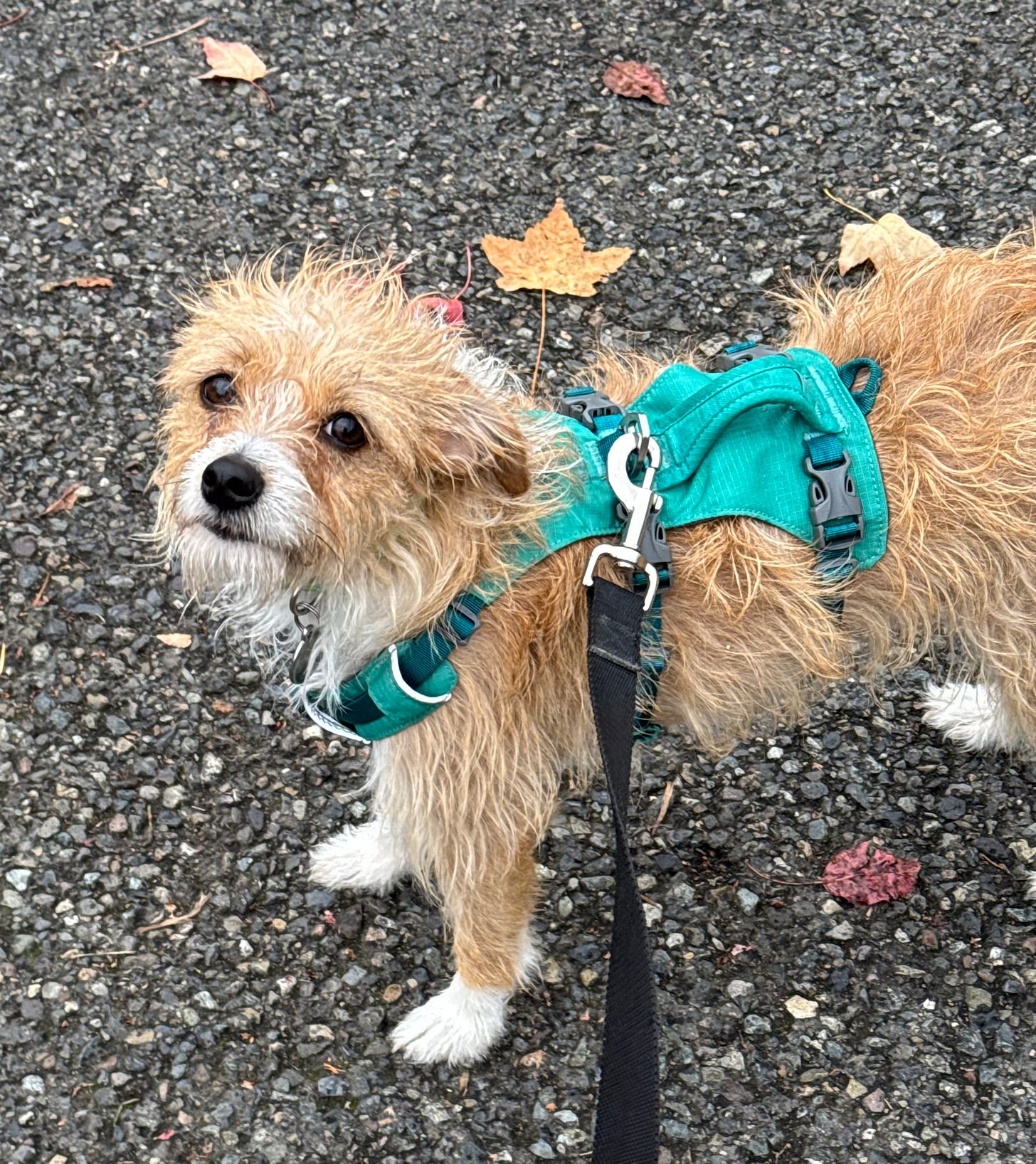

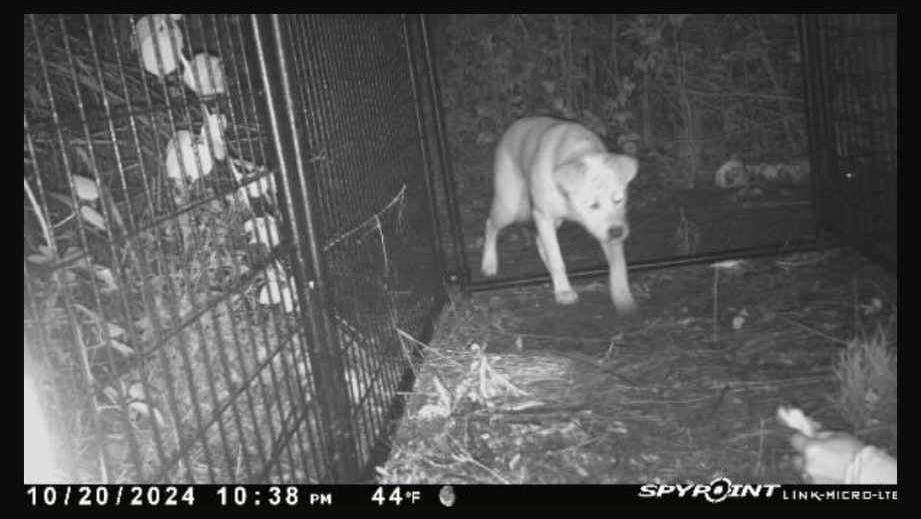
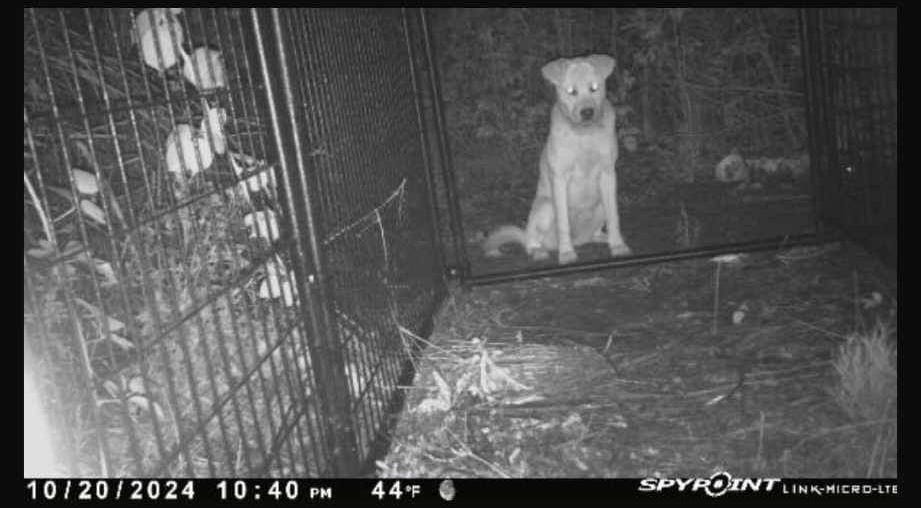
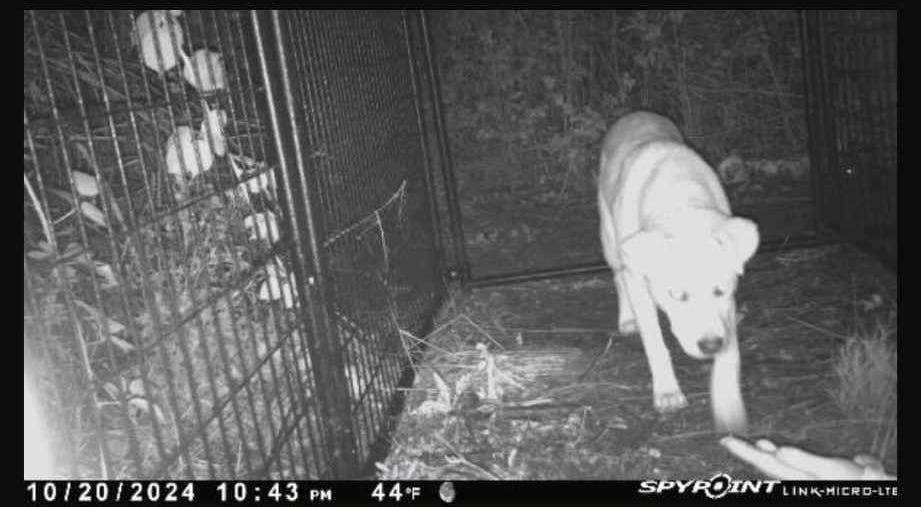
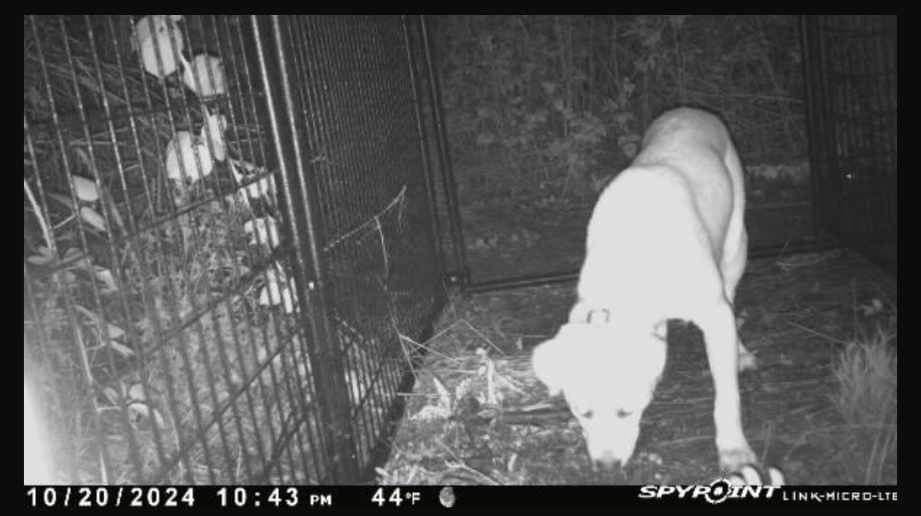
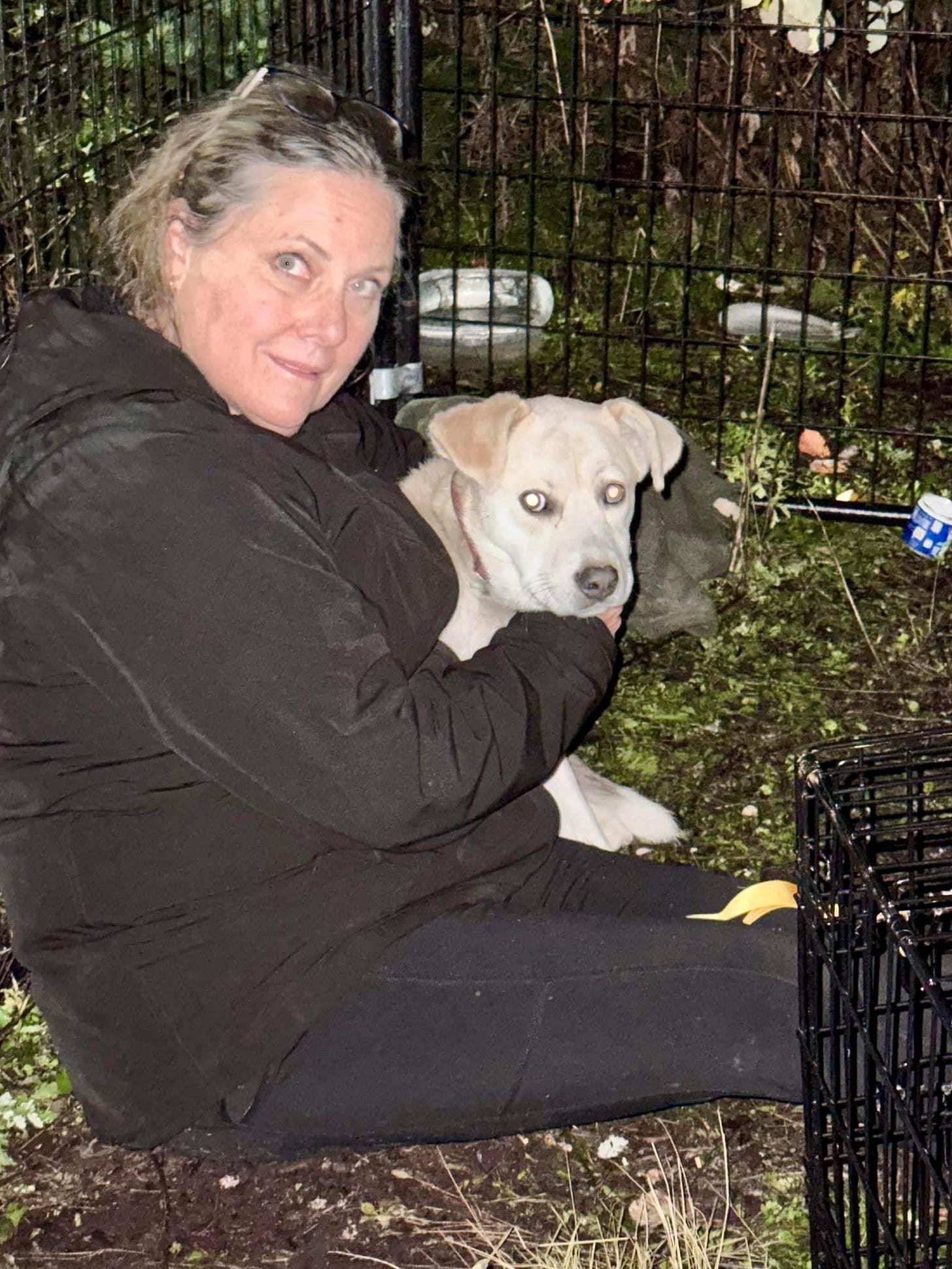
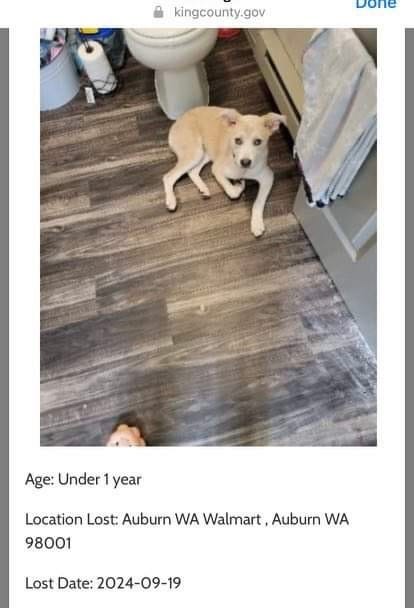

Such impressive work! In a rough world, your stories bring some comfort and peace.
Sad it took so long for her, but glad she is safe now. What a wonderfully beautiful dog.